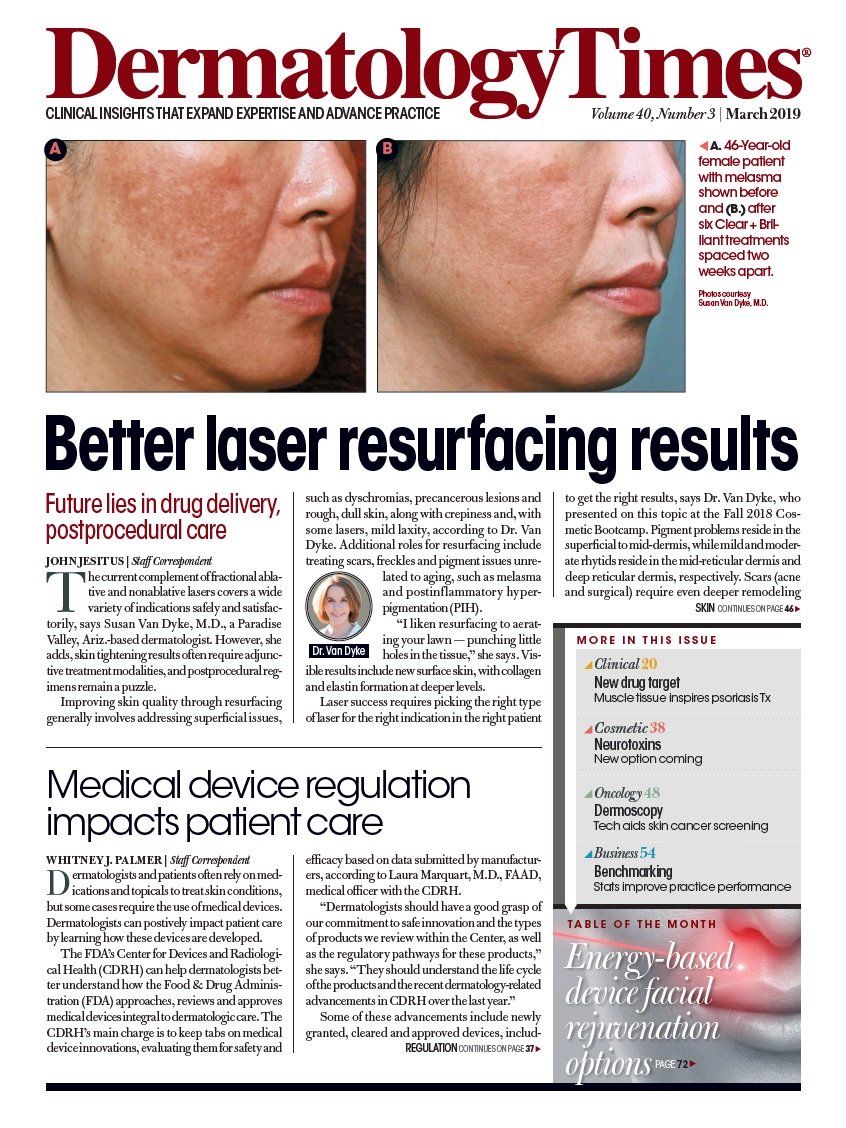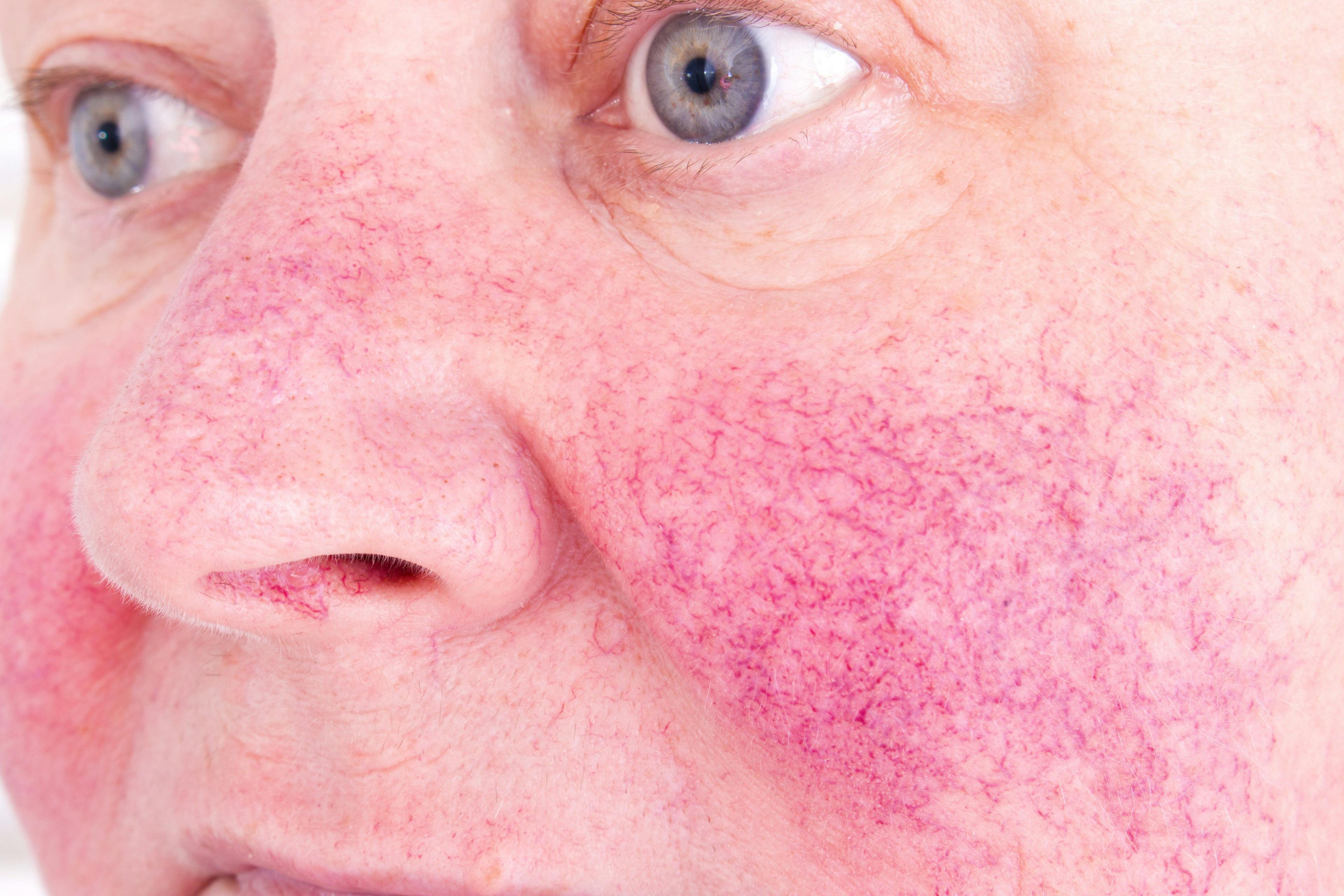- Acne
- Actinic Keratosis
- Aesthetics
- Alopecia
- Atopic Dermatitis
- Buy-and-Bill
- COVID-19
- Case-Based Roundtable
- Chronic Hand Eczema
- Drug Watch
- Eczema
- General Dermatology
- Hidradenitis Suppurativa
- Melasma
- NP and PA
- Pediatric Dermatology
- Pigmentary Disorders
- Practice Management
- Precision Medicine and Biologics
- Prurigo Nodularis
- Psoriasis
- Psoriatic Arthritis
- Rare Disease
- Rosacea
- Skin Cancer
- Vitiligo
- Wound Care
Publication
Article
Dermatology Times
Novel dermatology drugs approved in 2018
Author(s):
In many ways, 2018 was a banner year for new novel drug approvals with 59 drugs approved by the FDA’s Center for Drug Evaluation and Research (CDER). Learn about the innovative drugs that were approved for dermatological indications in this article.
Dr. Xu

In 2018, the FDA’s Center for Drug Evaluation and Research (CDER) approved 59 new novel drugs that represent products that have never before been used in clinical practice in the United States. This number includes new molecular entities (NMEs) that have an active moiety never approved before. In many ways, it was a banner year with the last record for novel approvals being 50 in 1996. Looking at the last three years, there was 45 approvals in 2015, 22 approvals in 2016, and 46 approvals in 2017.
Beyond the simple absolute number, further analysis suggests more encouraging news. First, 34 of these approvals (58%) were directed towards rare diseases or orphan indications. 32% (19/59) of these approvals are first-in-class therapies. Forty-one percent of these applications were designed as “Fast Track” medicines-this track is slated for new drugs that target unmet clinical needs and enable CDER to evaluate portions of the drug application ahead of the complete application to facilitate regulatory approval. Fourteen out of 49 drugs (24%) were further distinguished as a “Breakthrough Therapy” that addresses a serious or life-threatening disease for which there is an unmet clinical need and the new drug offers a potentially significant improvement over other available therapies. A breakthrough therapy designation leads to the commitment of additional regulatory resources and attention to shorten the development time between application and approval.1
Out of these 59 approvals, many have clear dermatological implications. In fact, 17% (10/59) have uses in dermatology and span infectious disease, oncology, and inflammatory conditions.
A summary is listed below organized by category.
INFECTIOUS DERMATOLOGY
Omadacycline (Nuzyra) was approved for community-acquired, acute bacterial skin and skin structure infections (cellulitis).
Tecovirimat (TPOXX) was approved to treat smallpox-it is the first drug to receive an indication for smallpox. While smallpox has been eradicated in 1980 as declared by the World Health Organization, it remains a biological weapon threat. TPPOX was approved under the FDA’s Animal Rule – which allows for efficacy to be established in animals when human trials are infeasible or unethical. A cohort of 359 healthy human volunteers demonstrated the drug’s safety. TPOXX was developed in collaboration with the U.S. Department of Health and Human Service’s Biomedical Advanced Research and Development Authority (BARDA).
Moxidectin (moxidectin) was approved for the treatment of onchocerciasis in patients 12 years or older. In the pivotal trial, a single dose of moxidectin was superior to ivermectin in skin micro-filarial density in a clinical trial of more than 1400 patients.2
CUTANEOUS ONCOLOGY
Cemipilimab-rwlc (Libtayo) was approved to treat cutaneous squamous cell carcinoma. Libtayo’s, a PD-1/PD-L1 checkpoint inhibitor, approval represents the first treatment for advanced cutaneous squamous cell carcinoma. In two open label clinical trials with 108 patients (33 with locally advanced disease, 75 with metastatic disease) showed that 47.2% of all patients had objective response with durability of response. The main side effects included immune-mediated reactions such as pneumonitis, colitis, hepatitis, and endocrinopathies. Libtayo was awarded both breakthrough therapy and priority review designations.
Encorafenib (Braftovi) was approved for unresectable or metastatic melanoma with a BRAF V600E or V600K mutation.
Binimetinib (Mektovi) was another approved drug for unresectable or metastatic melanoma with a BRAF V600E or V600K mutation.
RARE / ORPHAN INDICATIONS
Lanadelumab-flyo (Takhzyro) was approved to type 1 and type II hereditary angioedema. Compared to placebo, patients receiving Takhzyro had an 87% reduction in mean number of angioedema attacks per month compared to placebo.3
Cenegermin-bkbj (Oxervate) was approved to treat neutrophic keratitis, which can be caused by herpetic infections along with other causes. Copmlete corneal healing in 8 weeks was demonstrated in 70% of patients treated with Oxervate compared to placebo. Oxervate was rewarded priority review and an orphan drug designation.
MEDICAL DERMATOLOGY
Sarecycline (seysara) was approved for the treatment of inflammatory lesions of non-nodular moderate to severe acne vulgaris in patients nine years or older.
Tildrakizumab (Ilumya) was approved for adults with moderate-to-serve plaque psoriasis. Ilumya is a IL-23 inhibitor demonstrating 64% and 61% PASI-75 at week 12 in their two Phase-3 pivotal trials.4
Glycopyrronium (Qbrexza) was approved for primary axillary hyperhidrosis in adult and pediatric patients nine years and older in a topical formulation.
From an innovation perspective, 2018 led to many important new approvals relevant to dermatology. Beyond new drugs, we also saw the approval of seven biosimiliars. The third biosimilar (Herzuma) to Humira was approved with indications in plaque psoriasis and psoriatic arthritis. Truxima, a biosimiliar to rituximab, was approved as well with potential use in pemphigus. The horizon for 2019 is also bright with new therapeutics in late stage clinical trials for atopic dermatitis, alopecia areata, and cutaneous warts.
Disclosures: Dr Xu are members of Advancing Innovation in Dermatology, Inc., a registered 501(c)(3) organization designated as a public charity in the United States.
References:
1. U.S. Food & Drug Administration Center for Drug Evaluation and Research. Advancing Health Through Innovation: 2018 New Drug Therapy Approvals. https://www.fda.gov/downloads/Drugs/DevelopmentApprovalProcess/DrugInnovation/UCM629290.pdf. Accessed February 2019
2. Opoku NO, Bakajika DK, Kanza EM, et al. Single dose moxidectin versus ivermectin for Onchocerca volvulus infection in Ghana, Liberia, and the Democratic Republic of the Congo: a randomised, controlled, double-blind phase 3 trial. Lancet. 2018;392(10154):1207-1216.
3. Banerji A, Riedl MA, Bernstein JA, et al. Effect of Lanadelumab Compared With Placebo on Prevention of Hereditary Angioedema Attacks: A Randomized Clinical Trial. JAMA. 2018;320(20):2108-2121.
4. Reich K, Papp KA, Blauvelt A, et al. Tildrakizumab versus placebo or etanercept for chronic plaque psoriasis (reSURFACE 1 and reSURFACE 2): results from two randomised controlled, phase 3 trials. Lancet. 2017;390(10091):276-288.

Newsletter
Like what you’re reading? Subscribe to Dermatology Times for weekly updates on therapies, innovations, and real-world practice tips.

























